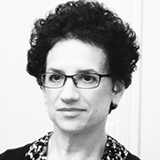Published: March 6, 2020
Introduction
While interest in quantum computing is burgeoning, there is not a universally accepted way to build quantum hardware. The diversity of approaches to building quantum computers bears a modest resemblance to the diversity of processor architectures in the early 1990s – there are superconducting, topological and spin qubits as well as FPGA-based quantum simulators. Honeywell is announcing a quantum computer based on trapped ions, promising lofty claims of market-leading performance and mid-circuit measurement, and likewise pledging to publish data to support those claims.
The 451 Take
Honeywell has come from nowhere with some cutting-edge announcements and ambitious (and measurable) plans. It makes sense that a company with expertise in precision engineering is well placed to build precision quantum computers. It is also telling that the company has chosen to use Quantum Volume – surely the fairest measure of quantum computing progress today – to show that it is serious in its ambition to be the market leader. Of course, huge challenges still await. IBM has nurtured an ecosystem of enterprises and enthusiastic developers for years and has experience in selling to enterprises that want to delve deep into data. Honeywell's heritage is less about selling software and information technology and more about design and systems. On the other hand, Honeywell has existing relationships with industries that might have the most to gain from quantum computing – aerospace, chemistry and materials science, for example. If Honeywell meets its ambitious goals, it might be that the opportunities come to Honeywell.
Context
The biggest challenge facing quantum computing today is coherence. As covered in our primer, a qubit can have a state of 0, 1 or a non-classical combination in which the exact state is uncertain (a superposition of states). Deterministic quantum algorithms allow us to use this non-classical state to encode problems that are then 'collapsed' into a definitive answer, such as a string of 0s and 1s. Coherence is a measure of how long the qubit can be kept in this uncertain state and thus have operations performed on it – vital for quantum computing. But this is a challenging problem – tiny particles that are the basis of a qubit are highly sensitive to the environment and each other. Maintaining coherence is an engineering problem, involving cryogenics, materials science, magnetics and vacuum to insulate the qubit while preserving the ability to move and manipulate it.
This is where Honeywell believes it can capitalize. The engineering and aerospace conglomerate has been investigating quantum computing for a decade and believes its experience in high precision control systems gives it an edge where technology companies more accustomed to buying servers and writing software will be unable to compete. Specifically, it has focused on trapped-ion technologies, which are designed and manufactured at its own foundry. Honeywell launched a beta program in December 2019, after a parallel development of eight systems across two locations with each system being focused on improving a specific characteristic.
Honeywell's ion qubit is an atom that has a net positive charge. By manipulating the fields produced by the microfabricated devices, the ions can be 'trapped' in the electromagnetic field – an ion trap. Here the ions are levitating above the ion trap, less than 100 µm from the surface. The Honeywell device has a linear geometry, meaning that a trapped ion can be moved along a well-defined trap axis to other portions of the trap device. The ion qubit has two internal states, 0 and 1, and it can be manipulated to be in a non-classical combination state during the execution of a quantum circuit. Once the qubit is measured, a result of 0 or 1 is recorded. Lasers are used for all the quantum operations, including initialization, gating operations and measurement of the quantum state. Honeywell uses Ytterbium as the physical material for holding the quantum state, because its structure is so well-defined it can be controlled in a more predictable manner.
Technology
Number of qubits are often used as a measure of the power of quantum computers, although this is a poor measure due to substantive differences in the characteristics of qubit design and how they are interconnected to create a quantum computer – factors that ultimately dictate how complex and how quickly a problem can be solved. You wouldn't buy a car based purely on engine size. Quantum Volume, proposed by IBM as a vendor-neutral benchmark, is a much fairer measure: it is a single-number metric that quantifies the largest random circuit of equal width (number of qubits involved) and depth (number of subsequent gates executed) that a quantum computer successfully implements.
Honeywell claims that upon its public release its initial quantum computer will have a Quantum Volume of 64 and is promising order-of-magnitude increases (10x) every year for the next five years – in other words, a quantum computer 100,000x more powerful than today by 2025. Honeywell says its first 'check in' on Quantum Volume after going into its beta phase only eight weeks ago was 16 and will release this test data to the public. For comparison, IBM recently announced it had achieved a Quantum Volume of 32 in its 'Raleigh' design.
Honeywell says it can do this because of the precisely engineered and isolated zones within its ion-trap architecture, combined with the ability to move ions between these zones. This allows it to hold quantum particles in a coherent state for longer and thus manipulate them more easily. This long coherence time and physical separability of qubits also means Honeywell can implement mid-circuit measurement. An individual qubit (or subset of qubits) can be measured in the middle of a computation, and an action performed based on this measurement. This is akin to an IF statement in traditional computing. Measuring a qubit results in its state being collapsed and the uncertainty removed – but Honeywell can reinsert this qubit back into the algorithm and reinitialize it if required so computation can continue. This is a differentiator for Honeywell.
Today, the company is managing much of its intellectual property as trade secrets, and thus it keeps the hardware on its own premises. Customers can access the quantum computer as a cloud service though APIs, and Azure Quantum is an access point.
Competition
Hyperscalers are building quantum management platforms too. Microsoft has launched Azure Quantum (with Honeywell as a partner), and Amazon is adopting a similar approach with its Braket service launched at Re:invent in 2019.


As Research Vice President, Owen Rogers leads the firm's Digital Economics Unit, is the architect of the Cloud Price Index and is head of 451 Research's Center of Excellence for Quantum Technologies. In 2013, he completed his PhD thesis on the economics of cloud computing at the University of Bristol. Owen was named 'Innovative Analyst of the Year' in the Institute of Industry Analyst Relations' global awards in 2018.


